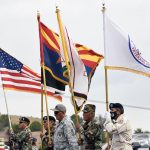
Letters: I’m not good enough or qualified to work
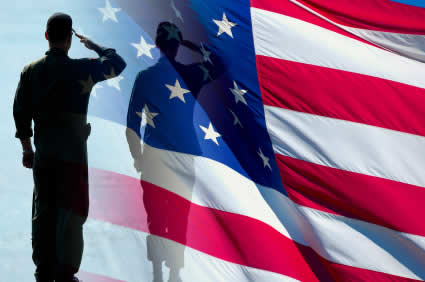
I understand and relate to what Chris Deschene is going through. I am a Navy veteran who served in Iraq. I received an education and will be finishing up my bachelor’s degree. I want to start my master’s degree in business administration soon.
After accomplishing as much as I could, I wanted to take my experience from my military and my education to work for the tribal government. I have applied for over 100 jobs. I have received only three interviews, which were offered to other candidates. I received over 100 letters from the Navajo Human Resources that stated I’m not qualified or that I am overqualified.
The advice that is given to the younger generation is “Leave the reservation, get your degree, and bring that back to help the reservation.”
I have received my education and have work experience. I answered the ultimate call of putting my life on the line to serve my country. Yet, I’m not good enough or qualified to work in my own tribal offices. I have given up trying to work for the tribe and putting the option of moving elsewhere to seek employment.
It is sad to see such a qualified individual be told that they are not qualified to be president, especially to tell a veteran who has made the ultimate commitment be told that he is not qualified to be president.
This decision the Supreme Court has made has sent a negative message to the youth that they mostly likely will not be good enough to be president. Along with that, the message of change is not likely. We’re supposed to be moving toward harmony but how is denying one of our own moving toward harmony?
Danielle Lynch
Church Rock, N.M.
Quintero has provided brilliant photos
Donovan Quintero has provided brilliant photography in print media for over a decade-plus. It has been refreshing to see his coverage of images that range from utmost joy to horrific tragedy.
No matter what the media content of the news, Mr. Quintero has maintained respect, dignity, and compassion for the focus of his images and how he captures the events and human spirit.
Lately, it has been incredibly informative to see his coverage of the 2014 Navajo Nation presidential coverage in articles and in “breaking news.”
Thank you for the insightful and concise coverage of this topic and for providing readers with coverage that has news-style markings of Newsweek, Time, National Geographic, and, of course, the distinctive Navajo Times.
Mr. Quintero, your photography is amazing and now coverage of the news is just as terrific.
Valarie Tom
Smoke Signal, Ariz.
How can Benally fulfill political promises?
In response to the article about Benally and his loan from the Navajo Nation in the Navajo Times, dated Oct. 23, 2014, how is it possible to borrow that much for the To’ bah i’ business in Shiprock, and show nothing for it?
Our town of Shiprock has remained the same for more than 40 years, with the exception of the fast food establishments. The business plan mentioned an RV park, a convenience store, travel center, snack shop, lounge area, a complete laundry, river walk, bathhouse with sauna and Jacuzzi, cultural center and other community activities. How wonderful an idea!
How can Benally fulfill his political promises of economic improvements as he talks on the radio, when about 10 years have passed since his loan from the last Shirley administration?
Now this leads into the current dilemma of political candidates with questionable backgrounds, more monetary gain, language deficiencies, and financial mismanagement.
We’ve read of many Council delegates misappropriating funds intended for projects and improvements, all for personal gain, but never any accountability. There needs to be retribution or legal charges for the politicians found with misusing Navajo Nation tribal funds.
When political hopefuls began their campaigning, they probably did not consider their future opponents digging into their backgrounds, but it did come about. With the Navajo primary election, the general public voted according to their own preferences and the two candidates were narrowed down. It was done according to a democratic system on which our whole country is based on.
Now, too many Navajo laws within Navajo laws are being brought forth to disqualify this candidate and this other candidate, bringing issues of discrimination and undemocratic actions into the picture. Are the laws written in the Navajo language?
For three generations back and more, we Navajo people have been encouraged to learn the English language with all education done in English. All books and materials were written in English and even today, children are learning English (except some Navajo programs). So, how many Navajo people in politics can say they can read and write in Navajo?
The home language might be Navajo in some environments, but not all, and to disqualify a candidate for this is undemocratic (parents are responsible for teaching Navajo in the home). Is it a crime to not know the Navajo language?
I say, our future leaders who are capable of improving our Navajo Nation government, our education systems, our health systems, and our economic systems are the ones we need.
Wilford R. Joe
Shiprock, N.M.
Physical activity is a health and life benefit
As the warm summer days fade away into colder brisk mornings, the morning exercise runs are getting much colder and time to pull on the running tights.
Running has always been a necessity more than a pastime of most Natives in the Southwest. Most Natives in the region have had to utilize their god given limbs and body to live and survive. Today, we label running as a recreation and outdoor activity. We need to revisit the concept and re-emphasize the need for physical activity as a health and life benefit.
I changed my employer five years ago, accepting a new job and responsibility. During the hiring process I was asked to go to a physician and get a physical examination as part of the job process. I received shocking news when the doctor sat me down to explain my results.
I was told I had extremely high cholesterol level (above 200), my blood pressure was also high 138/95, which is extremely close to Stage 1 HBP. The doctor explained that I would have to take a handful of pills and tablets to control my multiple symptoms of deteriorating health. That day I challenged myself to better health and better ways to relieve my stress. I started running.
I was 49 years old. I had always been a decent runner and a decent athlete so starting back up was easy I thought. I was wrong. It has been a hard and lonely road. The many miles that I have run are unmeasured to the observer but they mean a million miles traveled to me.
The exercise and running time that I spend does not mean one tick of the second hand of another person’s watch, but means an eternity to me. I have run 5Ks, 10Ks, half marathons and all of the different races in between. I ran my first full marathon successfully at the annual Duke City Marathon in Albuquerque. This is a goal I set four and half years ago when I pulled on my old Nikes to do my first run in years.
Today my health is excellent and I do not take any medication. I never took the meds, instead worked my tail off and have run the many miles to better health. I see my peers, the younger generation and the older folks that are experiencing many varieties of health issues. I see my old classmates and buddies suffering from years of ignoring their health. I see elders in poor health condition who are suffering.
I wish to express to anyone who reads this short writing that it is possible to check your health and stop the regression of your life. Get up off the seat, get out the door, and get on the road to better health.
Ervin Tsosie
Ganado, Ariz.
We are trying to construct a skate park
I am president of the Skateboarding Drug Prevention Club. We are a club dedicated to helping the youth today that drugs are not needed to have a good time. We are trying to construct a skate park in our hometown of Cuba, N.M.
There are obstacles and problems we have to face in order to achieve success, but we have the enthusiasm and motivation to keep moving forward. We have been working hard trying to get this done. We are also in the process of getting funding for the project.
I have a great council who are involved in this. My vice president is Timothy Albert, my secretary is Jonathan Chinana, and my treasurers are Henerena Montoya and Jovina Sandoval. There are also club members who fully support us, and the community who help us however they can. Our sponsor is Mr. Delgado, a chemistry teacher. Our co-sponsor is Cliff Sandoval, a building contractor.
Individuals willing to help us out with our project can contact me by email at kurenai15sakura@gmail.com.
Alyssa Walters
Torreon, N.M.
There never was a ‘land dispute’
Yaa’at’eeh Shí’K’éé dóh’ Shí’Dín’e’eh’. I was raised in Big Mountain by loving and caring traditional parents who both did not speak English …
… However, Americanization is not all that right. For example, listening to its standard news about the Dineh at Big Mountain is always distorted. The first paragraph of a news report will say “The Navajo and Hopi land dispute is a century old” when finally the U.S. government made laws “of equal divisions.”
… Furthermore, this also supports that we Dineh stumbled into this region in the 1500s and that all other tribes in “North America” were already settled when we “latecomers” were unwelcome squatters.
… Thus, the 1974 law made for the “land dispute” paints that same picture about the Dineh in my country as “intruders into Big Mountain area.”
… What I have witnessed throughout my volunteer work for Big Mountain is a truly traditional-based movement to protect their endangered language and culture … and this winter marks the 40th year of their resistance to relocation.
Today’s news blurb might be about sheep being impounded in the name of range management and certain elders being charged as trespassers in the name of America’s law of the land, but sheep culture goes deeper than just it being food.
What is being forgotten is that livestock are part of the rituals, sheep corral sites are sacred places, sitting and sleeping on a sheepskin once represented identity, rubbing mutton grease on your legs in prayer, and the wool for fiber works.
… We Dineh or Navajos should be paying close attention to this last stand at Big Mountain, and what happens there might happen to your community unless you already chose to embrace Americana.
No, there was never any “land dispute” among Hopi and the Dineh. We never had governments or Indian corporate politicians who had the magic of lobbying to influence the U.S. Congress to make an executive order called the Navajo-Hopi Land Settlement Act.
I know my Hopi neighbors and they are like us, they have nothing to give to Uncle Sam or to some big shot, corporate attorneys. Our votes do not even count, nationally or state wide. In the end, we will both be victims of this land partitioning law. We will never have control over the so-called natural resources in question and that is the underlying issue here, coal to fuel the growing cities and industries.
It is common sense knowledge. Do you, as Natives, truly believe that the government makes laws on the Indian peoples’ behalf?
… What do I recommend? Well, I’m not a registered voter, but honor Big Mountain resisters and all other elder resisters from other impacted areas.
And let us not forget our citizenship to a nation that can still think of and care for one another, a nation that withstood European invasions and signed treaties, a nation full of prehistoric beginnings, and that the Dineh nation played equal roles, among tribal nations, of co-existence in the Southwest.
NaBaahii (Bahe) Keediniihii (Katenay)
Dzil Ntsaa (Big Mountain), Ariz.
Thank you for being a pastor
I didn’t want Pastor Appreciation Month to pass without taking a moment to express my thankfulness for the many ways Pastor John Wilson Jr. shepherded us, encouraged us, loved us, and challenged us throughout the year, especially through the ministry of Children of God Fellowship Ministries.
Thank you for voicing your conviction that Children of God Fellowship Ministries remains one of the very best ways to reach families with the gospel on the Navajo Nation and abroad.
Thank you for reminding the congregation that Children of God Ministries is the biggest evangelistic ministry that we conducted all year and that Children of God Ministries is an all-church ministry, not just a denomination ministry.
Thank you for making Children of God Fellowship Ministries a priority not only on the church calendar, but your personal calendar as well.
Thank you for insisting Children of God Fellowship Ministries be adequately funded through the evangelism and outreach portion of the church budget.
Thank you for leading the way by not only being the first person to volunteer, but for saying, “Just tell me what you need me to do and I’ll do it.”
Thank you for visiting every family, for spending time with the families during group discussions, and being on the parking lot to meet families.
Most of all, thank you for being our biggest cheerleader. When we thought we couldn’t do it, you assured us we could. When frustration and anxiety might have ruled the day, you brought calm. When exhaustion started robbing our joy, your words of encouragement renewed our strength and resolve to not give up.
Thank you for being a pastor John Wilson Jr.
Chavis Johnson
President
Tse’ee’gai – House of Joy Church
Black Mesa, Ariz.
Fight the epidemic of teen suicide
As a student of social work and a Native American, I urge continuous vigilance to fight the epidemic of teen suicide on the Navajo Nation.
Native communities are especially vulnerable to the ripple effect of “cluster suicides” due to geography, tribal life, family, clan connections and loss of cultural identity, which the Indian Child Welfare Act inadequately protects.
Extreme poverty, unemployment, alcoholism, bullying, depression, drug abuse, domestic violence, peer pressure, and historical trauma are factors that contribute to the high suicide rates among Native teens.
Nationally 75 percent of deaths of Native Americans ages 12 to 20 years old are due to suicide, homicide, violence or intentional injuries, according to the Center for Native American Youth at the Aspen Institute.
Suicide among 15- to 24-year-old Native American youth is the second leading cause of death and 3.5 times the national rate, according to the Indian Health Service.
The poverty rate among Native Americans under 18 years old is 32.4 percent, according to the National Congress of American Indians Policy Research Center.
ICWA is ambiguous so it is left up to states to clarify and interrupt their responsibility in compliance. Please make prevention and crisis intervention programs throughout the Navajo Nation a priority, which will save lives and money.
All programs should be culturally sensitive. There is a need for mandated reporting of all suicides, scientific gathering of reliable data and research on continuous bases, which can be seen as an investment in the tribes’ future. Awareness, education, physician training, screening, treatment interventions and gatekeeper training can make a difference in native teen suicide.
The Navajo Nation needs more mental health services, Native social workers, and monies for funding programs. Networking, collaboration and data base sharing is necessary among all tribes, state agencies, nonprofits and federal governments in order to protect the sovereignty and cultural identity of tribes. It is necessary to be proactive rather than reactive.
Diana Tsoodle-Nelson
Albuquerque, N.M.

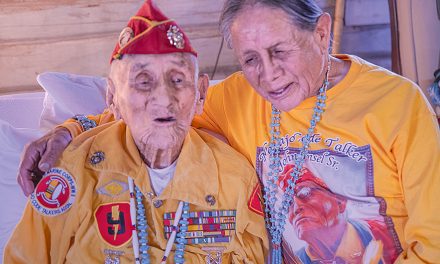
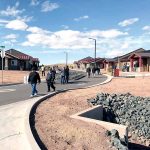
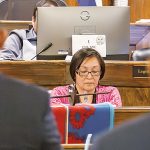

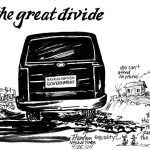


 Highway 264,
Highway 264, I-40, WB @ Winslow
I-40, WB @ Winslow